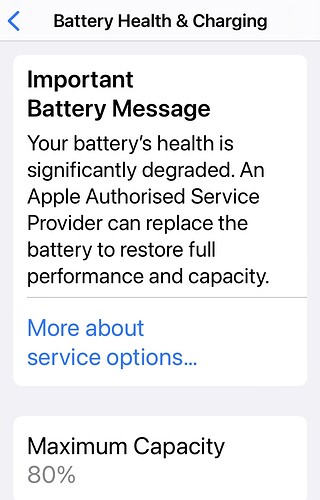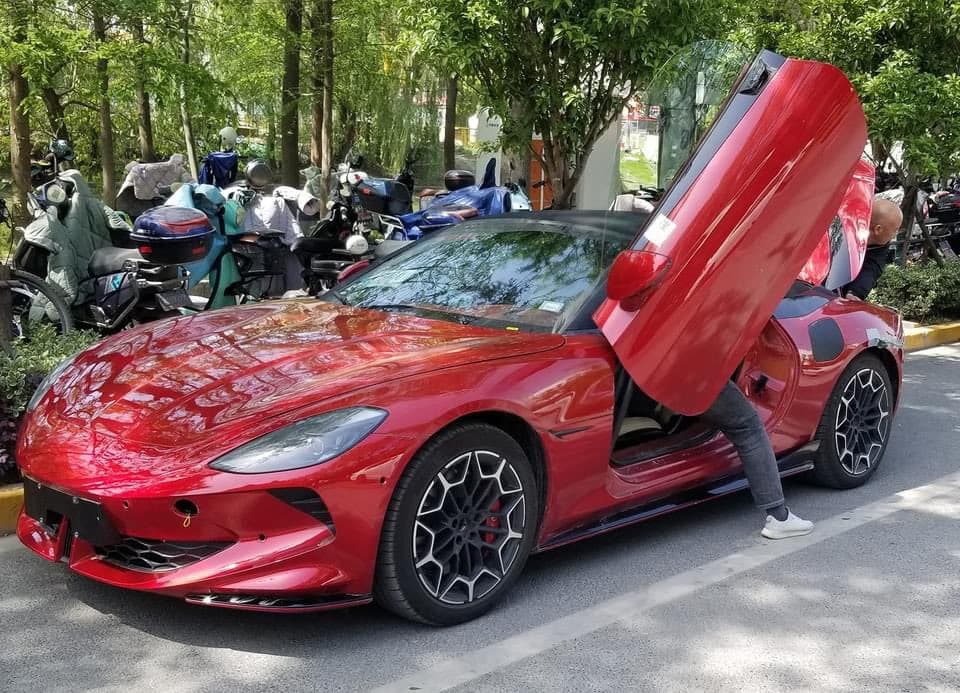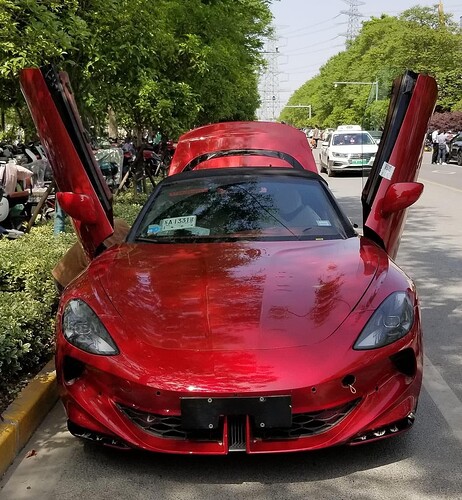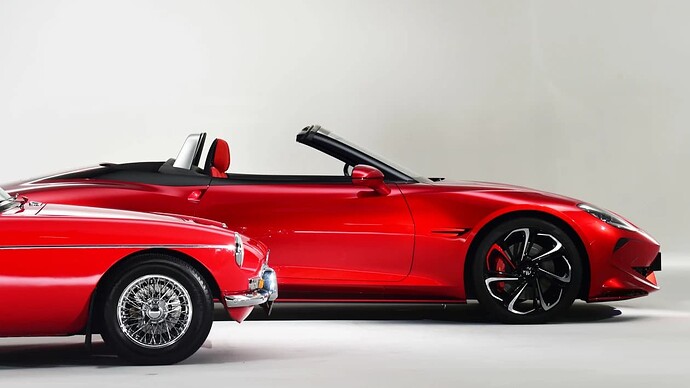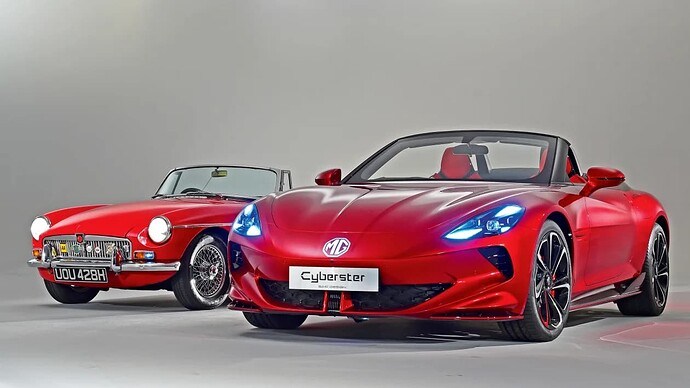They degrade, even when charged to the manufacturers instructions.
This will accelerate more when not following the ‘due process’ of charging instructions.
Please refer to your Local Authorised Service Dealer, for service details…
This is just planned obsolescence - all modern gadgets with LI batteries are capable of smart charging to the optimum capacity for longevity.
To be fair there is zero incentive for most company car drivers to plug their hybrids in. I don’t have a hybrid but do run a company car. My employer pays for my fuel and I pay them back at a fixed rate of 13ppm for private mileage. If I did have a hybrid and chose to plug it in and cover, lets say, the first 20 miles of each journey with electricity then it would cost me… 13ppm PLUS the cost of the electricity.
Stupid I know but this is the way HMRC treat hybrids, ie. the same as any other petrol or diesel vehicle.
As for only charging between 20% and 80%… I’m sure if there was a major issue then manufacturers would just code this into the battery management software. In fact we know this is happening because as some manufacturers have realised that they have been over cautious with regards to battery degradation they’ve unlocked some of this hidden capacity via over the air updates.
Those manufacturers that are still stating this are just covering their backsides and will stop as soon as they are out on a limb stating such things while the competition all just let the user plug in and charge to 100%.
Fair one TBH.
I cannot recall where, but I read recently that recharge expense is about on par with E5 now anyhow.
In which case…why bother again as you say.
Especially when these EV cars will be good for scrap after 10 years (if the battery actually lasts that long)
Tesla batteries are outlasting forecasts, as are Leaf batteries. Similar fears were expressed when the Prius came out, with Parkers initially levying a zero value at 15 years. As it was, the batteries lasted longer, and the cost of batteries fell.
Can you quantify range for a battery box when new vs range when its 15y old ?
I can definitely give you some numbers for IC cars if you want…
I think I may have seen the same in Which magazine; the huge rise in electricity prices put the cost of charging away from home on a par with petrol. It remains cheaper to charge at home though. The thing that made me re-evaluate was not so much that you can find ripoff chargers which cost you as much as using petrol, but that the cost of charging is actually significant full stop. I’d slipped into thinking the cost of charging was <waves hands vaguely> somewhere down in the noise, and could be ignored. It’s a mindset reinforced by early adopters telling me astonishingly entitled things like “Why don’t you just ask your employer to install a charge point at work? Then you could use it for free.” Turns out, amazingly, that tens of kilowatt-hours of electricity isn’t actually free. Who knew?
I’ll see if I can find it. There is at least one ongoing study that’s constantly cycling electric car battery packs to see how they age, and the batteries were standing up significantly better than most projections expected (a year or two ago when I saw it). The early Leaf batteries were notorious for losing capacity due to poor heat management but they seem to be an outlier, not a sign of what’s going to happen to the rest.
In fact I’ve read some stuff about plans for home “chargewall” style installations (which were intending to repurpose ageing car battery packs as home storage for solar panel or other renewables) having to be scaled back because there just isn’t the expected supply of degrading car batteries to support the business. The batteries just keep going.
to be honest I don’t rate “which” much these days and I gave it up years ago. They no longer comment on objectiveness with full technical testing, but on subjective opinion of whoever is doing the review. They have a subscription service which is somewhat declining thus should someone pay them to do a review of a product I doubt it be a “bad” one.
I appreciate that you have LiPo, LiIon, LiPo4 and other chemistry of Lithium based batteries and the car batteries are effectively loads of cells in parallel but… I have yet to own a 10y old laptop or a phone with a “half decent battery”… personally I wont hold my breath…
A few little details emerging:
- Price in China is projected to start at 300,000 Yuan, about £35,000
- Entry cars will be equipped with 245/45 R19 wheels on the front and 275/40 R19 wheels on the back. Other models will have 20" wheels, same width.
- The chassis is quite stiff; this is put down to the battery being an integral part of the chassis.
- The base model will have a 314hp Hasco motor which sits on the rear axle. The top of the line will be 4WD with twin motors, one being the Hasco, this time 340hp, but a second motor, a UAES unit from the MG4, rated at 204hp. The 340hp motor us shared with the “Rising Sun” F7 luxury car (Rising Sun was SAIC’s spin off brand, but outside of China will be badged MG), which will have swappable batteries.
I kinda like it, apart from the silly doors - and I’m sure that once you’re actually in it, they won’t matter that much.
Weight-wise, it’s a function of the battery technology and need for any semi-respectable range, like all current EVs. Although to be strictly fair, the weight of most cars has shot up in recent years, as the state of the roads will attest. The roads where I am are in a shocking state, and I find it hard not to draw a correlation between that and the number of hugely bloated luxobarges constantly trundling through the village. That’s probably for another thread, though.
If they really can keep it to £35k, that’s a seriously impressive bit of kit for the price.
If it’s 35k in China, then it’ll be significantly more than that here. Probably north of 45k at least.
From Autocar today, “£55,000 for a rear-wheel-drive 309bhp version and stretching to around £65,000 for a four-wheel-drive, twin-motor version with 536bhp” and 1.85 to 2 tonnes.
Z4 competitor, way out of MX5 territory.
The estimated HP numbers alone told us that …
I was going to say why aren’t they producing a lower powered version, if 309bhp is the entry point. But I suppose you have a minimum payload for the battery pack and motor. Which means you need significantly more power to shift the additional mass.
It would seem to be that if they manage to produce a 309bhp version at circa 1850kg, it would offer a similar power-to-weight ratio as the current 2.0 ND. But at significant additional cost.
Batteries are expensive and heavy. Needs a big battery to provide a decent range. Electric motors are small, cheap and light weight. To fit a motor capable of 200bhp rather than 300bhp would save minimal cost and weight.
Call me a luddite but I’d struggle to spend much more than about 35K on one of the very best condition B roadsters on the market today and I believe I would be having more fun and doing more for the environment and an ethically sustainable UK economy by runnning a B roadster 12k a year than by running the other one, oh and the B would be a far better fit in my garage ![]()
Curious design on that C*, and my decaying engineering brain can’t help noticing oddities in those “photos”. And I would not even begin to consider buying one.
In the middle of the front splitter, it looks like a tow-bar-ball mounting. Will this be used frequently?
Nice left and right road wheels, but they are on the wrong sides for best cooling extraction (spoke angles as fan blades) unless the car is going backwards. Or is it to contain spray better?
The photo touch up on the side shot is odd in several places, looks fake,
eg1 front brake caliper colour outside the wheel,
eg2 C* shadow on the floor is unnaturally sharp
eg3 lighting is totally different, B looks normal, C* is unreal.
I could bore on, but even I’m bored now.
